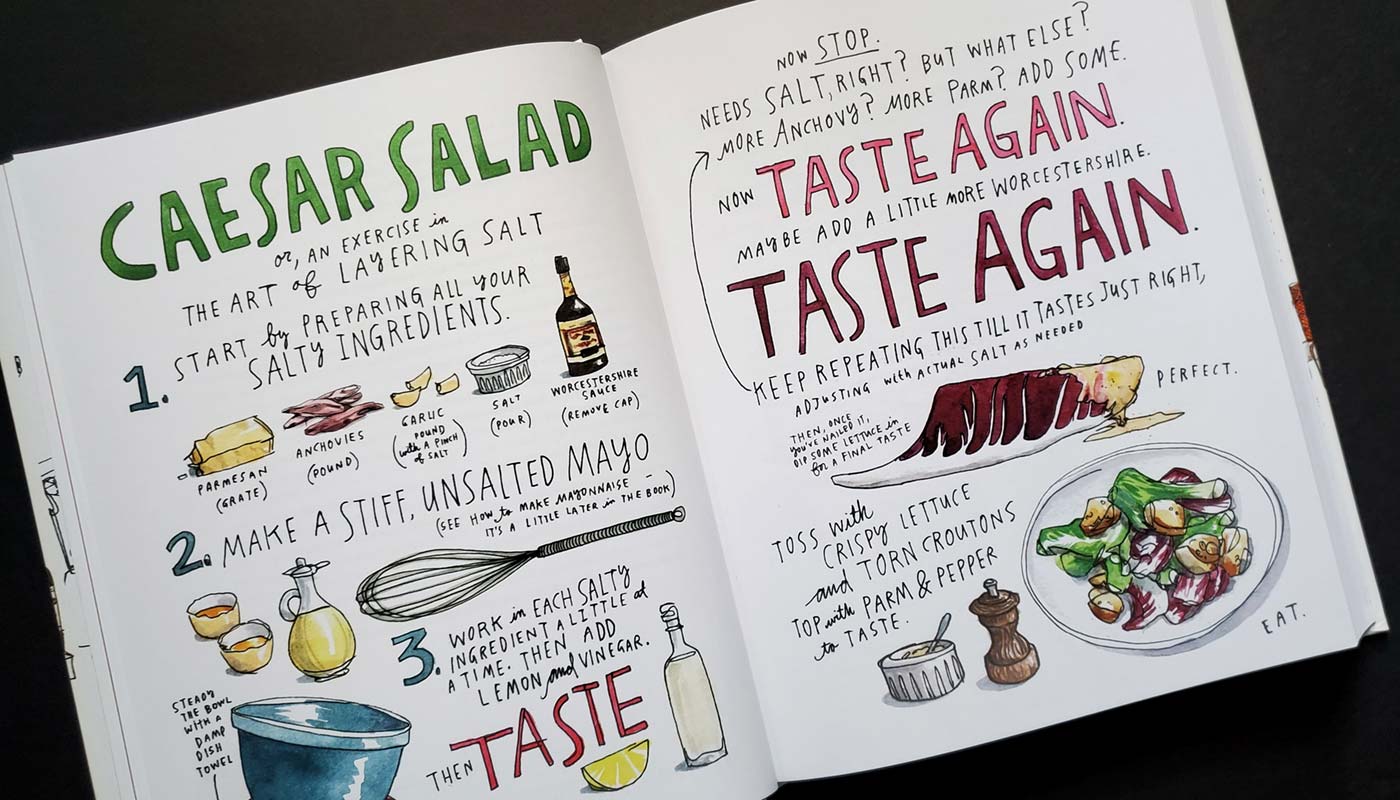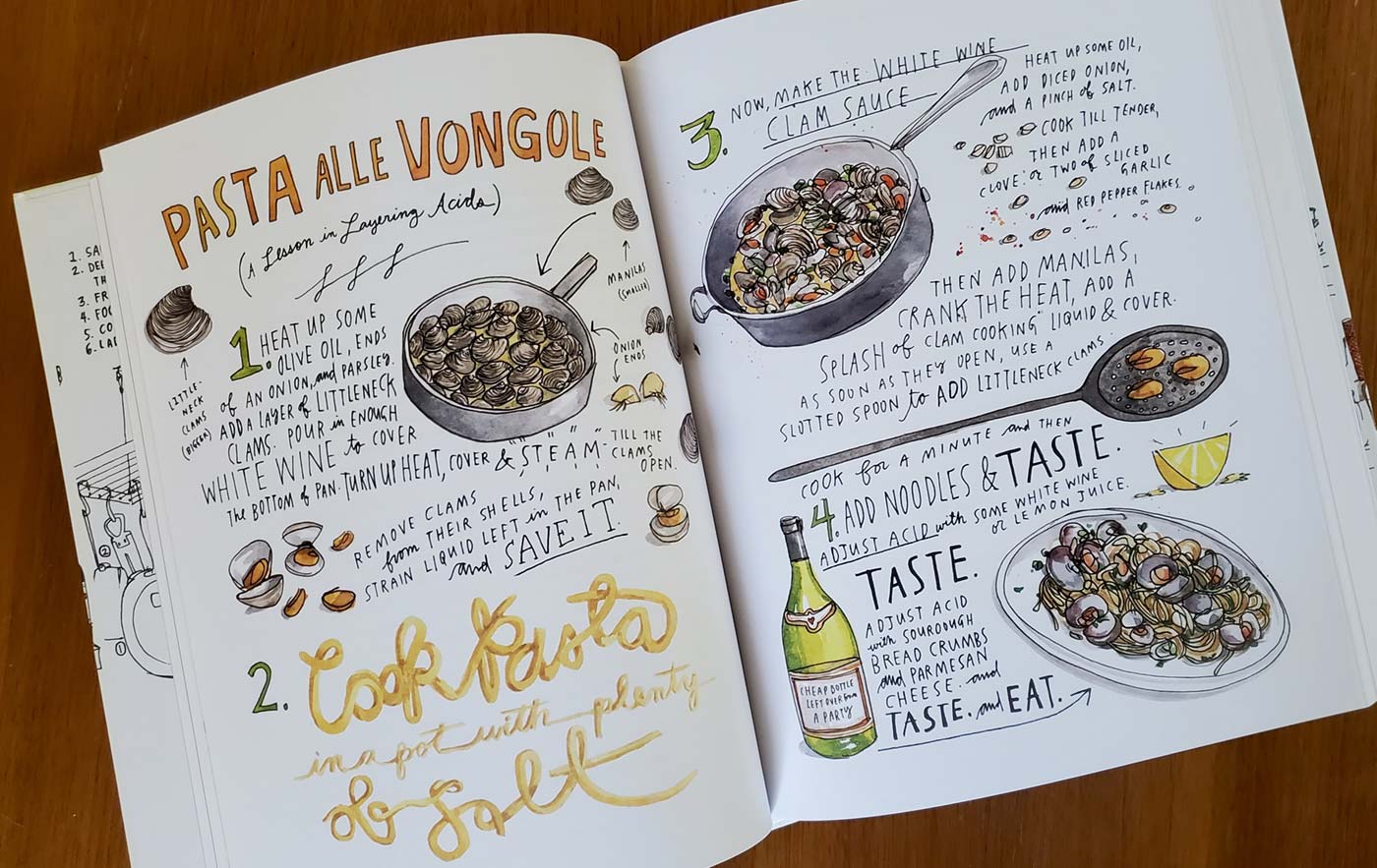Gather Your Friends and Create a Cookbook Club
Around this time last year, a nicely wrapped parcel landed on my doorstep. It was a time of social distancing, and a time when we all seemed to be craving a bit of community. Upon peeling back the paper, the cookbook Hot Bread Kitchen was revealed, its cover showcasing two mouthwatering loaves of nan-e barbari.
This moment was the unofficial start of my first long-distance cookbook club.
The sender of the cookbook is a dear friend, and prior to the world changing in 2020 it was common for the two of us to try new restaurants around Columbus, to break bread at old favorites, to share a scone over coffee or to try our hand at a cooking class. When my friend sent me a copy of the cookbook—and kept one for herself too—we were able to reconnect in a different albeit familiar way: over food. The plan was to bake the same recipes and compare notes as we went.
Time has passed since the first recipe (olive oil focaccia), and the world has once again changed with it. Right now, it seems as if we’re collectively navigating how to socialize again in ways that feel most comfortable to each of us. That, my friends, is the beauty of a cookbook club. It’s an easy (and delicious) way to connect and cook up community—whether virtual or in person.
If this sounds appetizing, then gather ’round your foodie friends. Here’s how you can start your own.
CHOOSE YOUR FANCY
When setting up your cookbook club, the first step is to decide whether your club will meet in person or virtually. There are plenty of merits to both.
Gathering in person is great for those who like to entertain while simultaneously taking the culinary pressure off one host. Think of it as a crowd-sourced feast. Each person in the club is responsible for cooking something different from the same cookbook—whether it’s a main, side or dessert—to create a collective meal for all to share.
Virtual clubs allow club members to enjoy cookbooks, community and connection in the comfort of their own homes. In this case, it’s often nice for participants to cook the same dish—it still feels convivial, and sets up a perfect opportunity for comparing notes and swapping insider tips.
No matter what you choose, aim for six to eight people. You’ll have enough attendees to try out various recipes, yet it’s still small enough to feel intimate and allow for discussion.
SET YOUR TIMER (AND EXPECTATIONS)
Once you decide how to gather, you’ll want to determine how often you’ll meet. Avid foodies may aim for every other month, while casual cooks may prefer more of a quarterly cadence.
Set expectations around complexity and ingredients too. Is this a beginner’s club, or will more advanced cooking techniques come into play? Will the recipes have commonly found ingredients, or will the participants need to source more elusive ones like black garlic or rose harissa? Enthusiastic cooks may find a special thrill in the hunt, but those pressed for time may not.

CHOOSE YOUR BOOK
The club is formed, expectations are set, now it’s time to select a cookbook. Take turns choosing; whoever chooses also wears the hat as host. Here are some popular titles to whet the appetite.
Salt, Fat, Acid, Heat by Samin Nosrat is the perfect all-rounder—easily accessible and full of fantastic recipes that always turn out well. Sprinkled throughout Cook This Book by Molly Baz are scannable QR codes that demonstrate trickier techniques via video, while Poppy Cooks is also great for bringing it back to basics.
For vegan and vegetarian meals that span global cuisines, try One Pot, Pan, Planet by Anna Jones. Explore Italian classics with a Marcella Hazan cookbook, or try your hand at Indian comfort food with From Bombay with Love. While full of color and flavor, maybe reserve Yotam Ottolenghi’s cookbooks for those die-hards who love to source tricky ingredients. (I’m looking at you, rose harissa.)
BON APPÉTIT
When the moment comes to show off your work and chat about the results, the in-person gathering can be as simple as a casual kitchen hangout or a full-blown dinner party with corresponding themes and attire (because why not?). If weather and recipes allow, you may even consider a picnic in the warmer months.
Virtual partiers don’t have to skimp on the fun and fanciness, either. Paperless e-vites do well to drum up the party vibe, and if you’re still feeling ambitious even after all of your cooking, you can even send around at-home cocktail recipes that can serve as aperitifs or digestifs.
If there’s anything you should not worry about with a cookbook club, it’s (perhaps rather ironically) how the food turns out. Some recipes will be winners; others may not get repeated, and that’s OK. Food is rarely ever just about food, or even nourishment. It’s about hospitality, pleasure, connection, community.
A cookbook club isn’t about cookbooks either—not really, anyways. It’s simply a vehicle for all of the above. It’s a speedbump against the organized chaos of daily life, a method for connecting and reconnecting whenever the need for togetherness arises in our ever-changing world. In those instances, consider dropping a parcel on a friend’s doorstep—it’s a great way to get the dough rolling.





